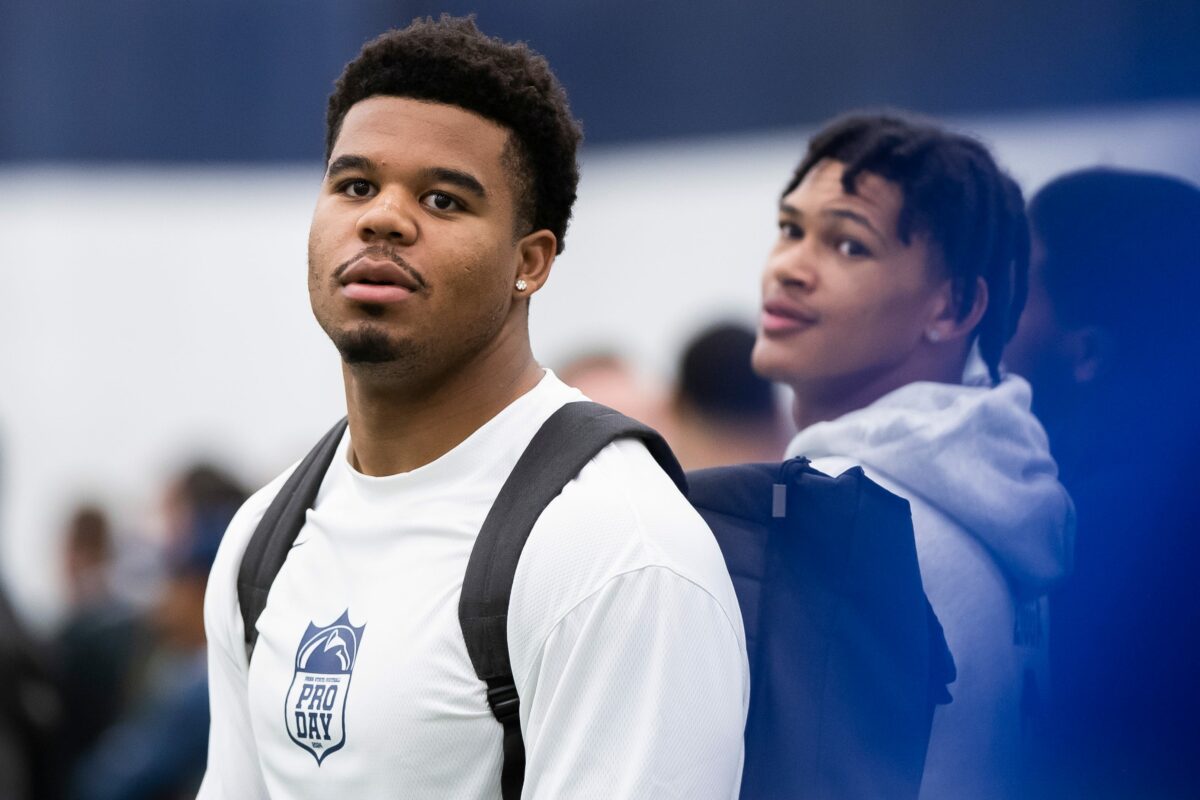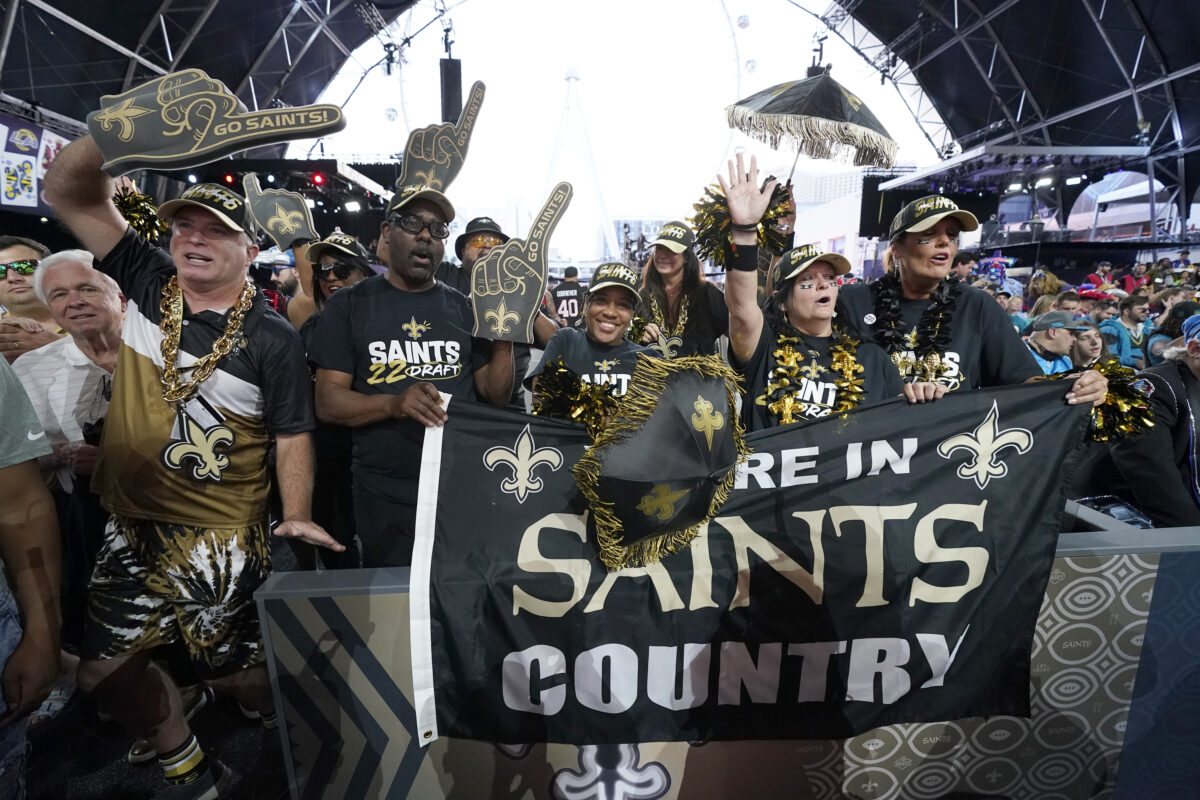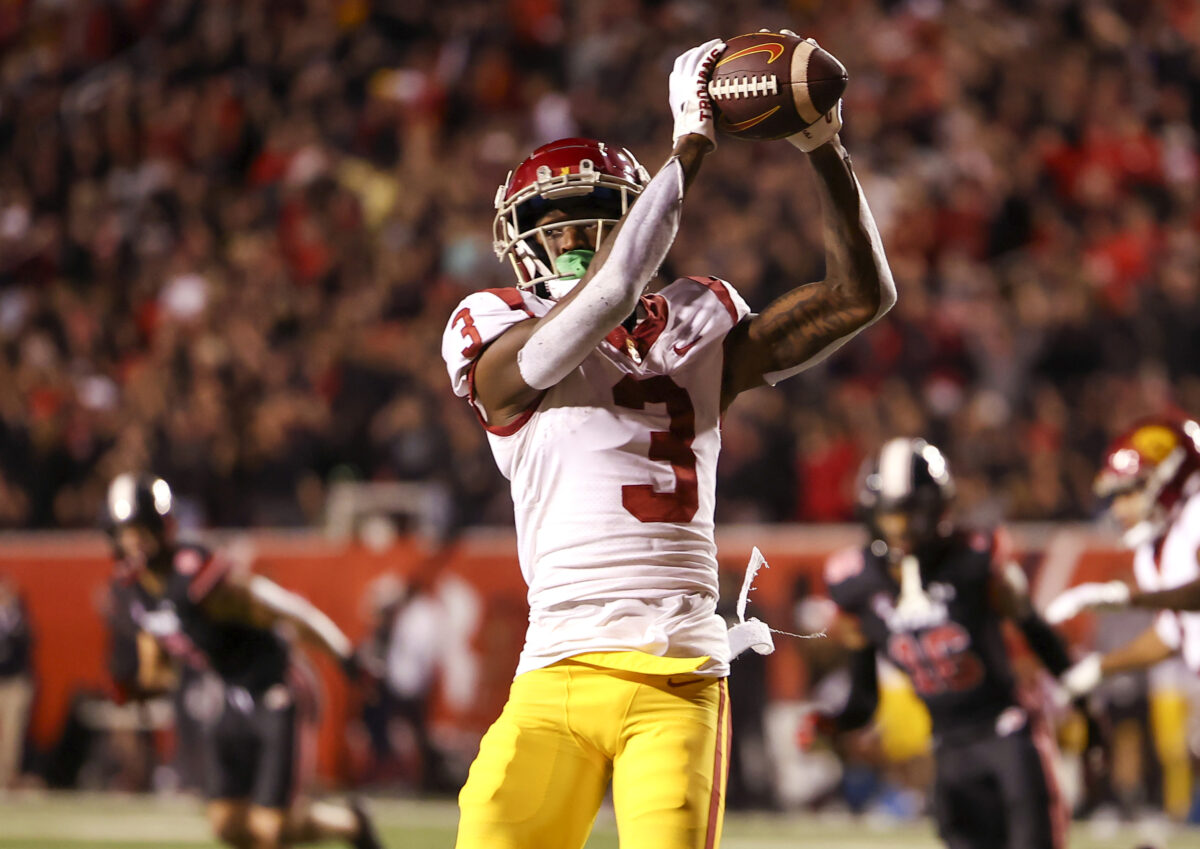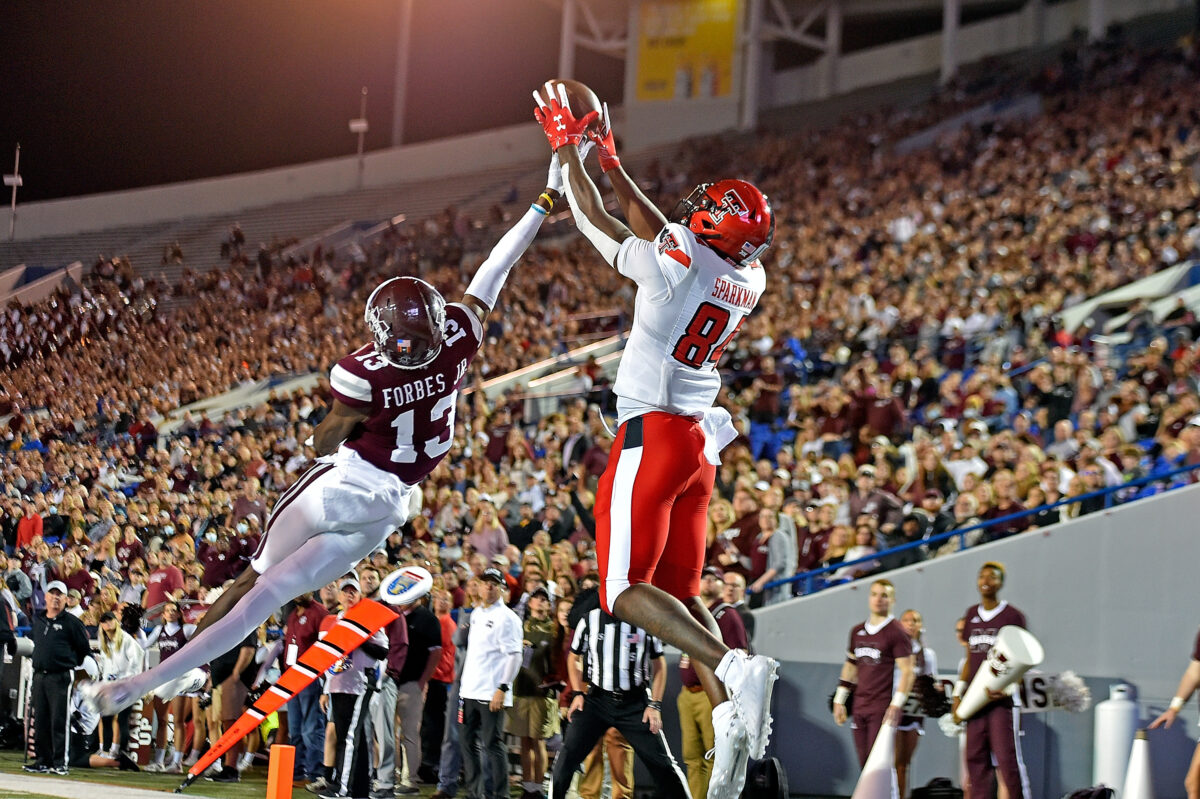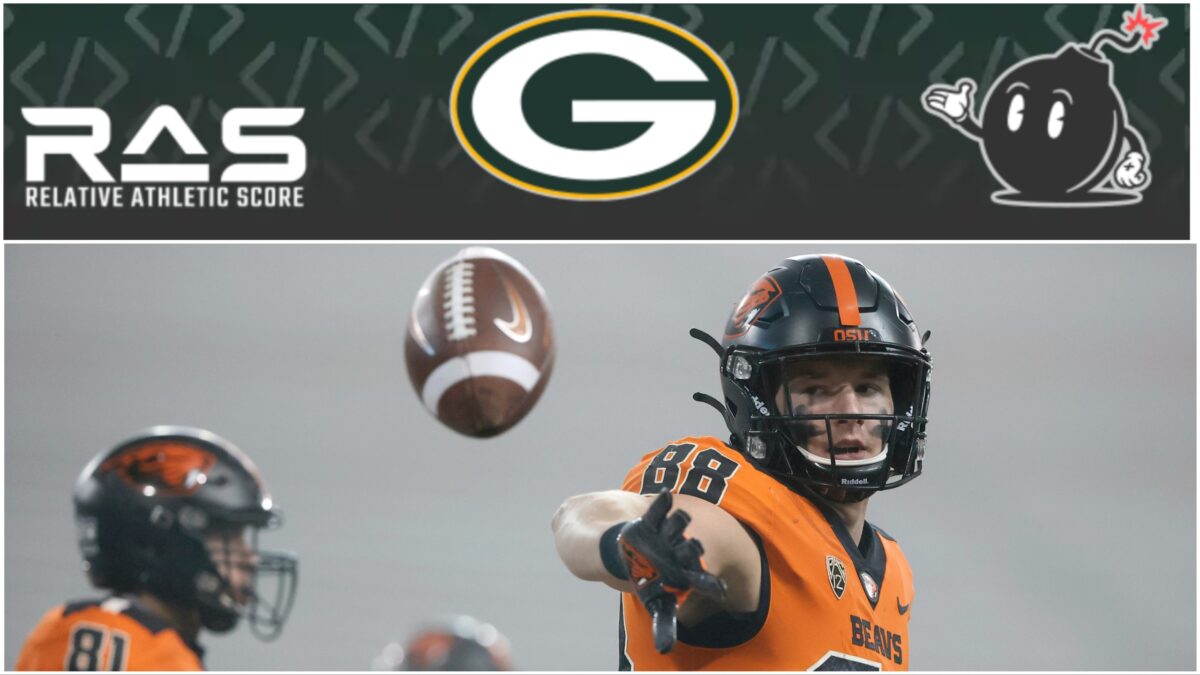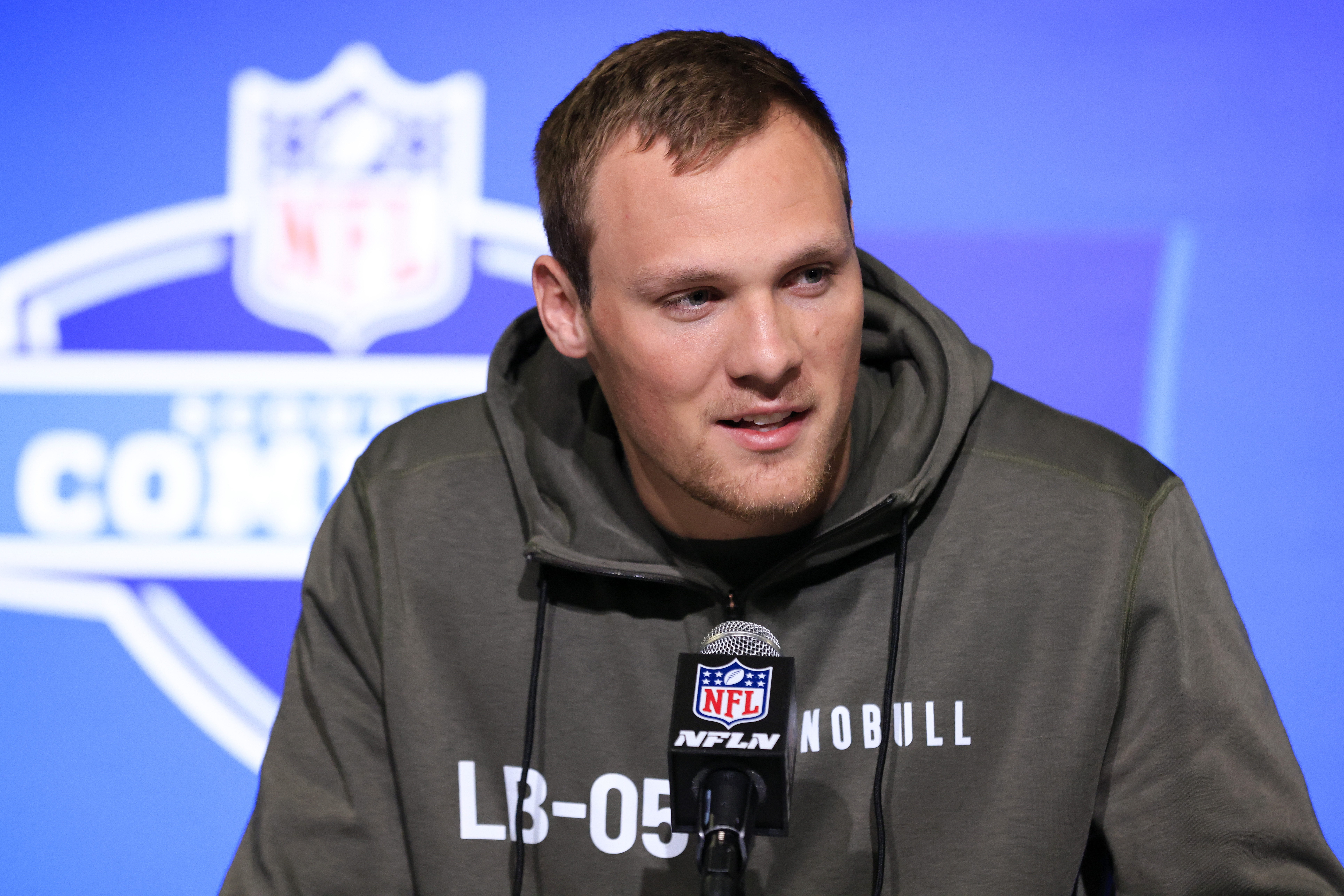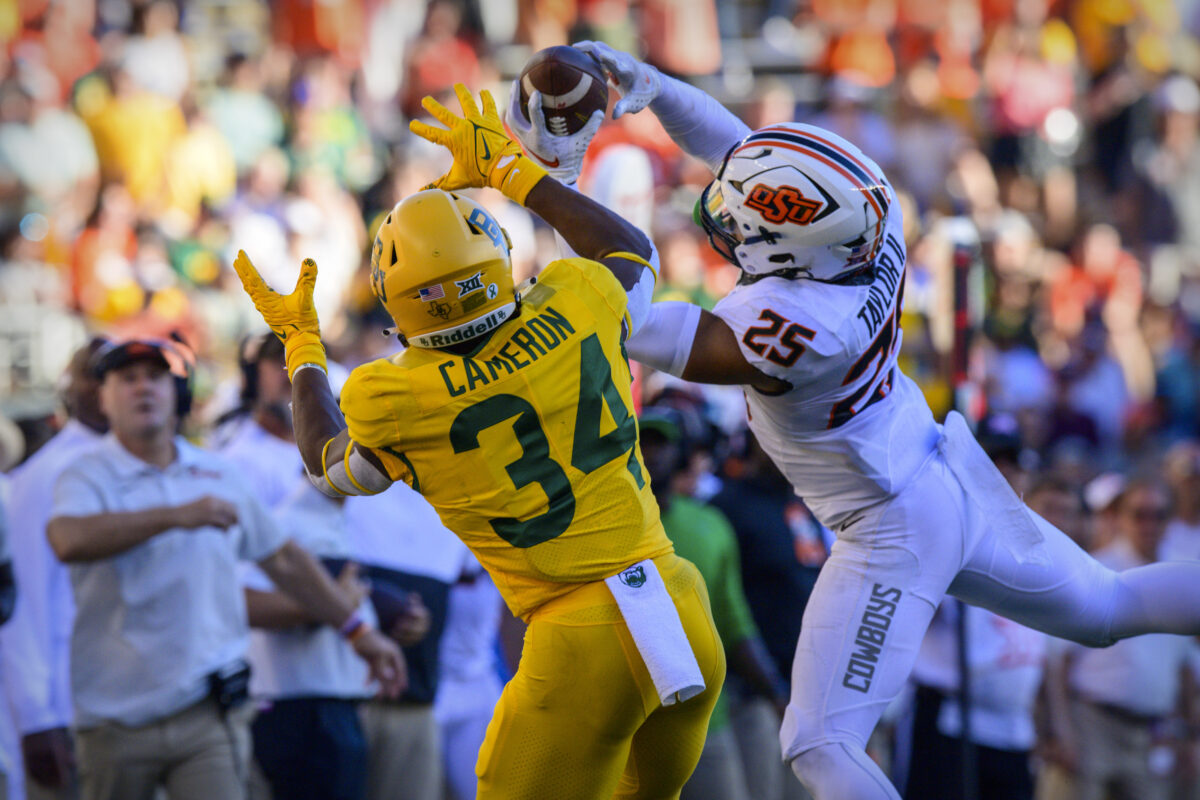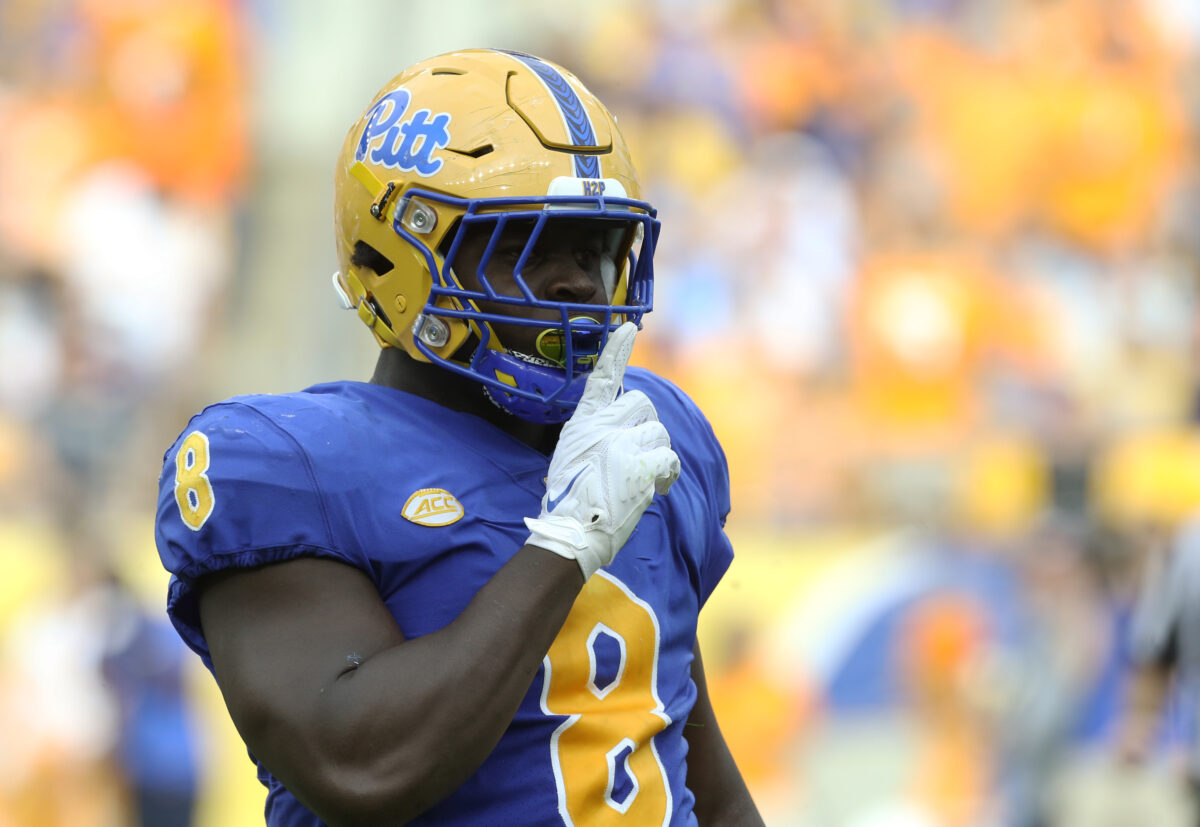One of the New Orleans Saints’ pre-draft visits almost slipped under the radar. Penn State pass rusher Demeioun “Chop” Robinson told the Daily Collegian’s Sam Woloson that he visited the Saints the week before the school’s March 15 pro day; the same week in which the team met with Northern Iowa defensive tackle Khristian Boyd at their headquarters in Metairie. Robinson is an impressive athlete, and he can move and make plays unlike anyone else the Saints have at defensive end.
Robinson, 21, weighed in at a hair under 6-foot-3 and 254 pounds at the NFL Scouting Combine, and he put up great numbers in athletic testing drills: timing the 40-yard dash in 4.48 seconds and clocking the short shuttle in 4.25 seconds, with a 6.94-second mark inn the three-cone drill at his pro day. He also leapt 34.5 inches vertically and 10 feet, 8 inches broad. That combined in a 9.79 Relative Athletic Score, which is well within the range that lines up with the Saints’ own in-house metrics.
He’s undersized by New Orleans’ standards, but both head coach Dennis Allen and college scouting director Jeff Ireland have expressed an eagerness to add different body types and more versatile athletes at defensive end than they’ve valued before. After tying for the fourth-fewest sacks in the NFL last season, they can’t afford to be so picky.
And Robinson could be a good get. He’s commonly projected to go in the first round, possibly as early as to the Saints at No. 14, though most mock drafts have him being picked after other players like UCLA’s Laiatu Latu and Florida State’s Jared Verse. He had 17.5 tackles for loss and 9.5 sacks in 22 games at Penn State, having started his college career at Maryland. Pro Football Focus charting credited him with 48 pressures in 2022 (12 games) and 26 of them in 2023 (10 games), when he missed time with an unspecified head injury after a bad collision against Ohio State. He’s healthy now and hoping to put his best foot forward when meeting with NFL teams like the Saints.
[lawrence-auto-related count=4]
